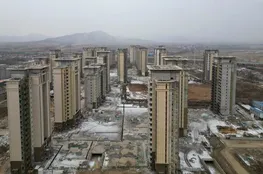As 2024 draws to a close, the economic trajectory of El Paso County is continuing to mirror national trends. This alignment may initially seem mundane, but compared to past years when the region typically lagged behind, it's indeed noteworthy. At present, the U.S. economy is experiencing robust performance. My recent forecasts for the country's GDP indicated upward revisions for the remainder of this year and into the next, as factors like strong consumer spending and a resilient labor market drive growth. The U.S. economy expanded at an annualized rate of 2.8% in the third quarter, according to the latest from the Commerce Department, a healthy pace although slightly down from the previous quarter’s 3% growth. Typically, a trend growth rate has been pegged at 2%, so surpassing this is impressive, especially in contrast to struggling developed nations.
International economic conditions, particularly within the Euro Area (EA), present a stark contrast. Germany, a cornerstone accounting for nearly 30% of the EA economy, has faced negative GDP growth for a year. Despite the U.S. grappling with substantial structural challenges, such as managing a trillion-dollar interest payment on national debt annually, it boasts several competitive advantages. Consequently, I've revised U.S. GDP growth estimates to 2.8% for 2024 and 2.2% for 2025. My confidence in U.S. economic growth remains firm, despite wavering consumer sentiment—a key economic indicator as two-thirds of GDP stems from personal expenditure. The University of Michigan's consumer sentiment index rose slightly in October, reflecting cautious optimism despite ongoing uncertainties linked to the upcoming presidential election.
Presidential candidates' differing policy agendas contribute to consumer uncertainty, yet given the tight race, I anticipate consumer spending and business investment to remain relatively stable in the near term post-election. Moreover, legislative changes take time to implement, and congressional consensus is required for substantial shifts. Inflationary pressures have eased, with the September Consumer Price Index (CPI) showing a year-over-year increase of 2.4%, a slight dip from August's 2.5%. Notably, gas prices have dropped by 15.3% compared to a year prior, contributing significantly to overall inflation reduction. Despite this reprieve, more stable inflation components like auto insurance and housing costs have surged. Auto insurance has climbed 25% nationwide, while home prices are up 45% from pre-pandemic levels.
My recent focus includes exploring the increasing costs of homeowners insurance influenced by weather-related risks like hail and wildfires. Colorado is experiencing notable hikes in health insurance costs, ranking 10th nationwide for 2024 increases. Data from the Peterson-KFF Health System Tracker highlights a staggering 121.3% rise in medical care costs since 2000, compared to an 86.1% increase in overall consumer goods. These statistics are crucial for economic outlooks as health insurance costs influence service inflation and government spending, significantly impacting the national debt of $36 trillion. Although prices have risen since 2020, the pace has slowed, allowing for interest rate reductions. Recent cuts include a 50 basis-point reduction in September, with more cuts expected, potentially aligning terminal rates to 3% by 2026. Mortgage rates are also anticipated to dip below 6% by 2025, offering relief to homeowners.
National employment remains resilient, as evidenced by August’s 8.04 million job openings—a 4.3% monthly increase. Stability in job quit rates and layoffs further signal workforce retention. Locally in Colorado Springs, job openings fell slightly, but a sharper decline in unemployment reflects an improving labor market balance. Between August and September, the labor force grew, reducing regional unemployment to 4.2% from 4.5% and aligning closely with Colorado's and the nation’s improved rates. In positive local developments, performance-based job growth incentive tax credits from the Colorado Economic Development Commission are set to boost employment in El Paso County with companies like WMD Squared Engineering expanding in the area. Additionally, a new business district is forming in northern Colorado Springs, replacing previous agricultural zoning.
Despite cooling housing markets, reflected in a decline in home sales and building permits, the area is adapting with new developments. Commercial real estate trends show rising vacancy rates across office, medical, and retail segments. However, stability in industrial space suggests alignment with broader national patterns. The U.S.’s competitive edge over other developed nations comes from its abundant natural resources and lower dependence on trade shocks, like the Ukrainian crisis, compared to regions like the Euro Area. The U.S. maintains its status as a hub of innovation and entrepreneurship, showing higher patent and startup rates than European nations. Although aging, the U.S. demographic trends are not as pronounced as in Europe, with a median age of 39 compared to Germany’s 47. Despite ongoing immigration debates, immigrants significantly contribute to sectors like health care and hospitality, further fueling U.S. innovation and economic growth.
Ending on a positive note, the U.S. remains comparably strong, leveraging its inherent advantages to navigate future challenges.
























